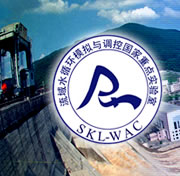《Sedimentary Geology》杂志刊登“应用高频探地雷达重建河流系统水槽模型的三维沉积体系结构”
作者:Hiroko Okazaki, Hiroomi Nakazato, Youngjoo Kwak
刊物:Sedimentary Geology,2013年, 293卷,21–29页
关键词:探地雷达;三维分析;高频天线;实验水槽沉淀物;河流系统
摘要:探地雷达(简称GPR)为获得浅地下结构的三维影像提供了快速有效的方法。研究了如何应用探地雷达,通过采用高频探地雷达天线,获得小型实验水槽沉积物的无损成像。探地雷达测量采用1.6GHz的天线,对水槽沙质河流系统模型进行了两个试验。一个用于揭示探地雷达天线的穿透深度和分辨率,并在水槽中重建河流沉积形成的三维结构,另一个用于研究反射边界的特征。试验材料主要壤土。第一个试验表明,1.6 GHz的天线适合实验室使用,在河床全穿透厚度为15—24 cm时,它能够提供2—3 cm 的深度分辨率。探地雷达扫描使用磁铁矿标记河床,能够准确地对河道三维结构的进行重建。第二个试验使用石英砂而不是磁铁矿,再加上壤土,也成功地拍摄到了三维结构,这是因为它们有不同的相对介电常数。这项研究表明,探地雷达是一项可行的技术,能够对试验水槽沉积物进行三维分析。
Application of high-frequency ground penetrating radar to the reconstruction of 3D sedimentary architecture
in a flume model of a fluvial system
Authors: Hiroko Okazaki, Hiroomi Nakazato, Youngjoo Kwak
Journal: Sedimentary Geology,Volume 293, pages 21–29, July 2013
Keywords: GPR; 3D analysis; High-frequency antenna; Experimental flume deposits; Fluvial system
Abstract:Ground penetrating radar (GPR) offers a fast and efficient method for visualizing three-dimensional (3D) images of shallow subsurface structures. We investigated the application of GPR to nondestructive imaging of deposits formed in a small experimental flume using a high-frequency GPR antenna. The GPR measurements, made with a 1.6 GHz antenna, were conducted on flume models of sandy fluvial systems. We conducted two experiments, one to reveal the penetration depth and resolution of the GPR antenna and to reconstruct the 3D architecture of fluvial deposits created in a flume, and the other to examine the characteristics of reflection boundaries. The experimental materials were mainly loamy soil. The first experiment showed that a 1.6 GHz antenna was suited to laboratory use, offering a depth resolution of 2–3 cm in full penetration of a bed 15–24 cm thick. GPR scanning yielded an accurate reconstruction of the 3D architecture of a fluvial channel using magnetite marker beds. The second experiment also successfully imaged a 3D architecture using quartz sand instead of magnetite, and loamy soil, which have different relative permittivities. This research shows that GPR is a feasible technique for 3D analysis of experimental flume deposits.
原文链接:http://www.sciencedirect.com/science/article/pii/S0037073813000717
翻译:张大茹 
